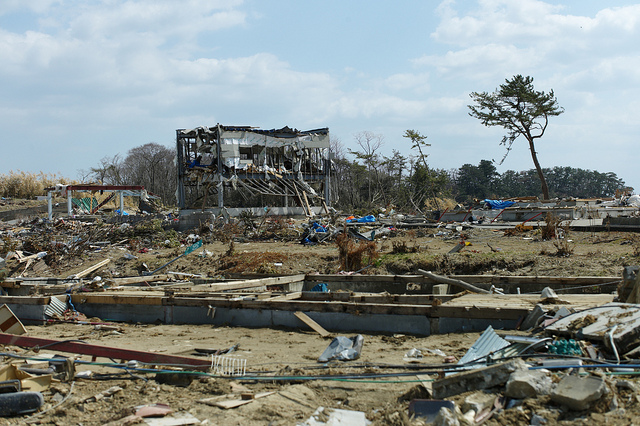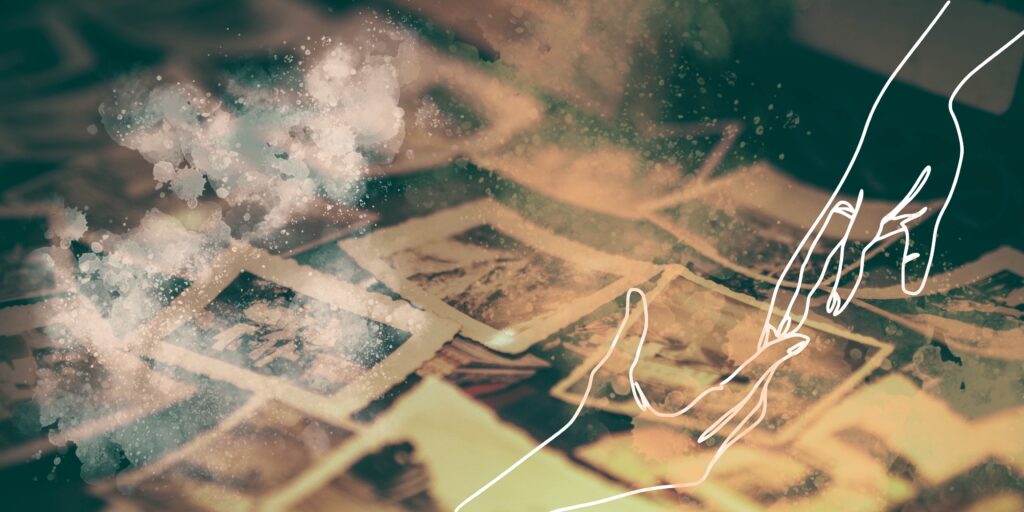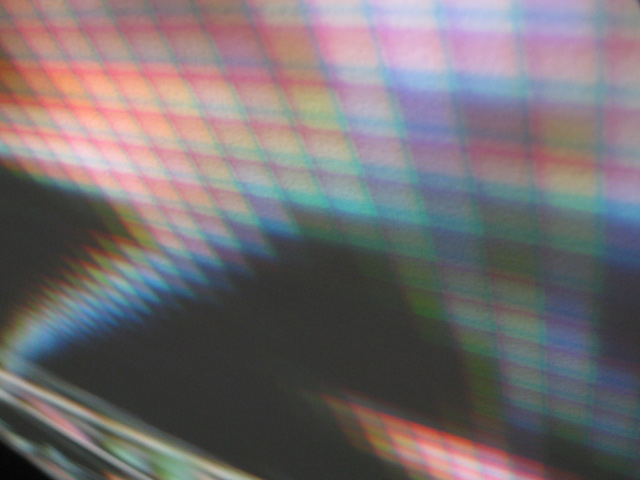Poet and journalist Luis H. Francia journeys through Japan, bearing witness to the devastation wrought by the 2011 earthquake and tsunami—and to the creativity arising from these very areas.

August 14, 2012
Minamisoma, Japan—The artist Kaihatsu Yoshiaki handed each of us a bamboo pole with a fishing line tied to a pebble, sans bait or hook. A motley crew of artists, museum curators, one writer, and one art historian, we were to cast our lines into the waters of the Pacific. The tide was coming in, the waves insistent; was there a breeze blowing from the south? We were acutely aware of what direction the wind sprung from, being just outside the danger zone, a radius of twenty kilometers around the Fukushima Daiichi power plant that suffered a nuclear meltdown as a result of the disastrous 9.0-magnitude earthquake and ensuing monster tsunami of March 11, 2011, fifteen months ago. We distrusted all winds, and there was no way these messengers of bad news could be slain.
What did we expect to catch? Nothing, except for some seaweed. Everything, for whatever our individual imaginations invested this act with—hope, faith, even charity. This was some kind of religious act, a gesture propitiating the gods. Each line was cast into our own inner sea to see what would emerge: we were fisherfolk then not of others’ souls but of our own. And what we caught could catch us, too.
The fishing industry here was devastated—who would buy fish harvested from the surrounding waters? In front of us lay the ruins of a sea wall, proof of its abject failure as a barrier against the fury of an ocean, whose rage reached heights of 40.5 meters (133 feet, about as high as a 13-story building), and inland as much as 10 kilometers. Right behind us, on the shoreline, the foundations of two edifices were all that remained. Some 50 meters from shore homes and small businesses had been smashed, their roofs caved in, wires exposed, cars mauled and utterly useless. Others had had their facades stripped, revealing their contents, like a series of stage sets waiting to be struck at the end of a long run. A piano stood in one corner of a home, exposed to the elements but seemingly intact, waiting forlornly for its owner to come home and stroke its keys.
Kaihatsu was an artist friend we had hitched a ride with from Tokyo. He’d been coming to the devastated areas for about a year now, wanting to get the stories of the displaced and to record some of the unusual local dialects spoken in the different districts. Many of the locals—particularly those who lived within the 20-kilometer forbidden zone—faced the distinct possibility of permanent relocation, and their traditions, rooted in a particular place, were in danger of being swept away. As we neared Fukushima in the Tohoku Prefecture, we drove by a couple of ghost towns. In one, Iidate, Takizawa, another artist who had also come along for the ride, took radiation readings with a portable meter, beginning with 0.8 millesieverts and going up to 1.58, then receding as we put distance between us and the town. According to Takizawa, a reading of 0.6 was considered safe, though no one really knows for sure what levels are truly safe. In the next town of Iino, people were still living and working. The path radiation took in the initial aftermath of the meltdown was capricious. And of course one could still be affected by the radiation that lingered in the forests, the soil, and sometimes the air. My wife Midori and I reassured ourselves by noting that Kaihatsu had visited and stayed any number of days over the course of more than a year, and seemed none the worse for it.
Each day we drove to a different district, visiting temporary housing sites and community centers set up for the displaced, though the housing—neat rows of well-built structures—looked anything but temporary: those created for the inhabitants of the zone right around the nuclear plant were clearly built to last. It was very unlikely that they, as with the unfortunate inhabitants of Chernobyl, would ever return home. If nothing else, Japan is an organized, resource-wise country, and while its bureaucracy can be maddening (and what bureaucracy isn’t?), it has been remarkably efficient in managing the destruction. Still, enough reminders existed to give us a graphic idea of the devastation wrought on that terrible day.

Wherever we went, individual cars and trucks dotted the fields—a serendipitous variation, both playful and grim, on the art group Ant Farm’s Texas installation—while uprooted steel railings, piled up hither and thither, assumed wildly imaginative shapes. In Ishinomaki, an arm of the tsunami had coursed through the Kyukitagawa River, its narrow channel increasing its ferocity as it sped upriver, pounding homes and businesses in the port area and far inland. One part of the city is piled high with cars gathered from various sites, now unusable due to saline damage. Elsewhere, a giant can lay on its side in the middle of a traffic island, partly bent but recognizable, like a misplaced Claes Oldenburg sculpture. The faux can belonged to a company that sold whale meat; maybe this was payback time for the whales. Someone had written on the upturned bottom, “All for One and One for All.” There is a move to keep the can where it is, while some residents want it out of sight (and out of mind).
—
A highlight of our visit, which Midori likened, half jokingly, to “disaster tourism,” was sitting in on a village council meeting our first night. I was the sole gaijin, and Midori the sole female. The men, mostly middle-aged, were concerned with the survival of the lion dance, or kagura. The universal lament was aired: the younger folk preferred the siren call of the cities, with their more contemporary traditions. A couple of men remarked that no one was in line to succeed the village’s lone dancer, Hiromune Kanno, a tall, well-built, 51-year-old man who had been at it for thirty years. Kanno described himself as an amateur, but clearly, from the impromptu performance he staged, with another man holding up the tail end of the lion costume, he was an amateur of the first water.



